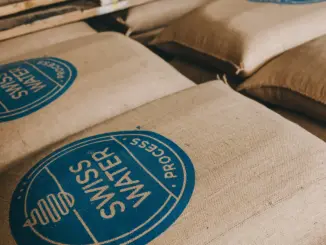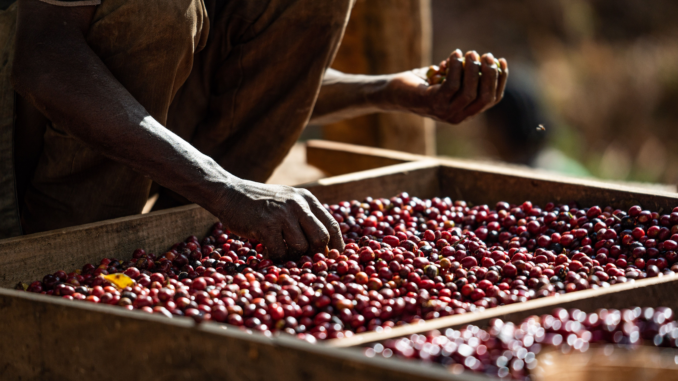
Continuing our series on coffee processing, we learn about double fermentation, a term that can refer to several different processes.
BY TANYA NANETTI
SENIOR ONLINE CORRESPONDENT
Photos courtesy of Cafe Imports
Editor’s note: Check out other entries in our “Understanding the Process“ series here.
When exploring the wonderful world of high-quality coffee, you’ll discover that no specialty coffee tastes exactly the same as another. This difference depends on many different factors, such as varieties, country of origin, processing, and roasting style.
Double the Fermentation, Double the Fun
Alongside the classic coffee processes (natural, washed, and honey), many new fermentation processes are beginning to appear on the market. Among these, double fermentation is one of the most confusing, having been used to describe processes very different from each other.
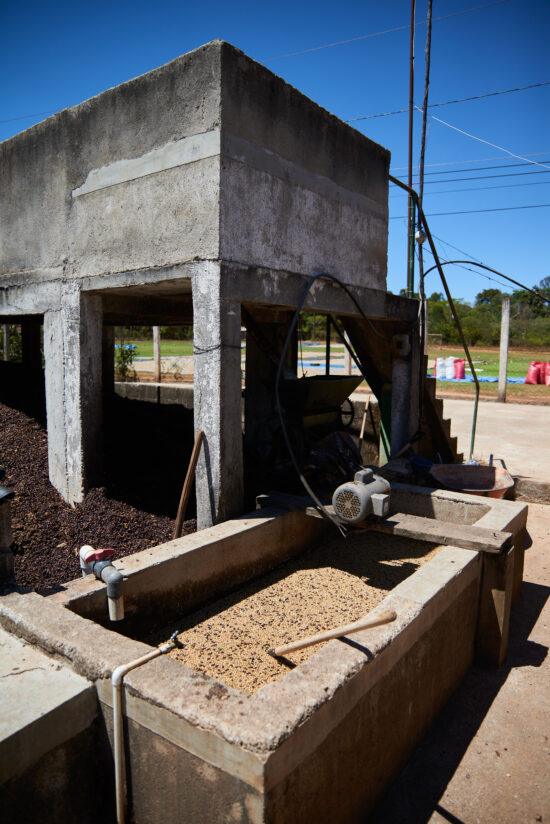
Taya Brown, Ph.D., and coffee production researcher and educator at Cafe Imports, helps us better understand the origin of double fermentation and its development.
Perfected in Kenya
“The term ’double fermentation’ is a bit misleading, as it is often applied to coffees that are soaked in water after being fermented and washed’” Taya begins. “The same process is called ’Kenyan process’ because of its common use in Kenya, but is also called ’double washed,’ which might be closer to what’s actually happening than the term ’double fermentation.’”
Originating in Kenya, this technique has a very practical reason behind its origin.
“It was a method of holding washed coffees until space was freed up in the drying areas. Both patios and raised beds are a limited resource,” Taya shares. “During the harvest season, more coffees may be coming to the mill than can fit on whatever real estate is available for drying. In Central America this is when wood-fired dryers get put to use, either in tandem with a few hours or days of patio drying, or simply to dry the coffee from start to finish. In Kenya, this overabundance of ripe coffee is often handled by storing washed coffee underwater, keeping it cool and safe from insects and other contaminants, until drying space becomes available.”
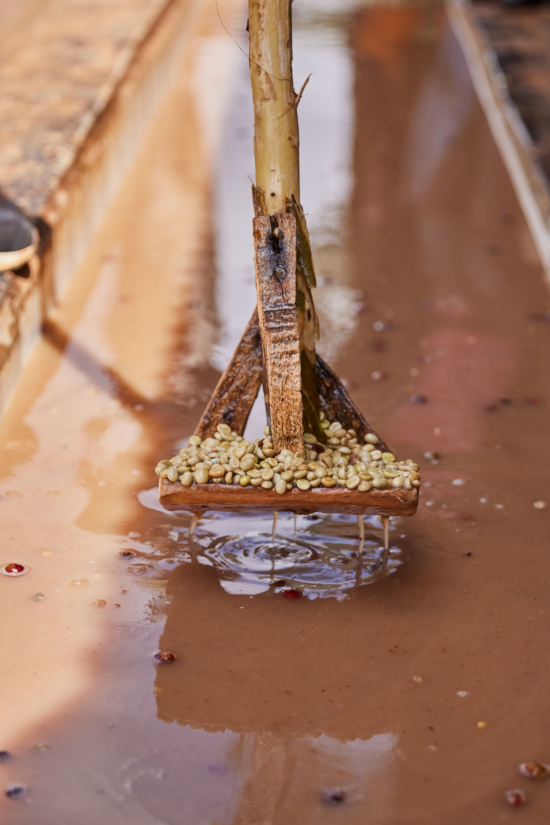
How It Works
To be specific, though, while called double fermentation, the water soak “isn’t so much a fermentation, because the fruit, which is what has the sugars that ferment, has already been removed,” says Taya. ”There may be other things going on, like homogenization of the microbiome, homogenization of temperature, hormonal reactions in the seeds (which are still alive at this point), and the leaching of various compounds from within the seed. Any of these could lead to more consistency within and between batches, and even more consistency from year to year. It could also result in a more balanced cup.”
Kenyan-processed coffees are often characterized as vibrant. They tend to have high acidity with fruity, floral notes and a clean, balanced cup. But, as Taya explains, “It’s likely that the varieties used in Kenya contribute significantly to the flavor profiles common to the country’s coffee. It’s hard to tell how this same process will taste outside the Kenyan case, as that will depend on variety, temperatures, water quality, and myriad other variables. The homogenization, cooling, and sorting afforded by the double fermentation process may also result in a cleaner cup in other parts of the world, but that’s just a guess.”
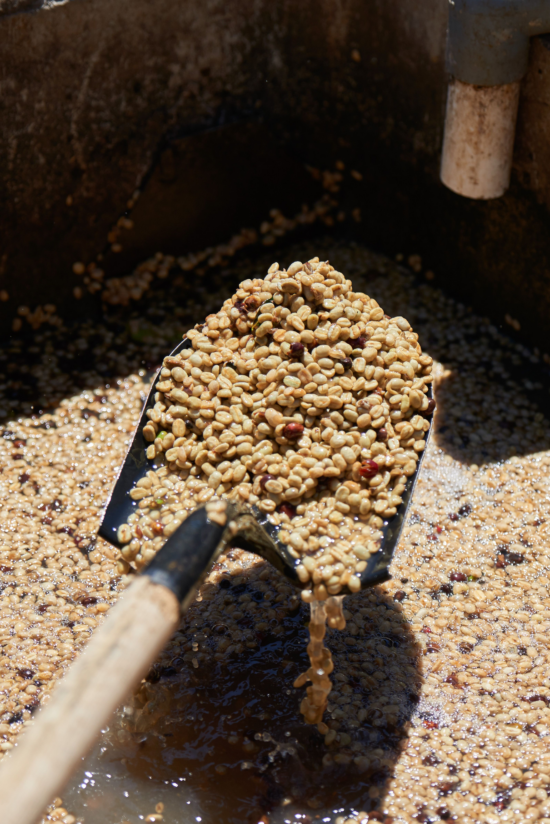
One benefit of this method is the reason why it was developed in the first place: Double fermentation allows washed coffees to be held for a time while freeing up space in the drying area.
Reducing the Number of Defects
But there’s more with this method. As Taya points out, “It also allows for multiple points of defect removal. Defects can be removed before the initial fermentation and washing steps, but can be removed again once the wet parchment is submerged for the second wet step, and again when the coffee is re-washed. More stages of processing provide more ways to surface defects and take them out.”
Nowadays, however, the term double fermentation can mean something completely different.
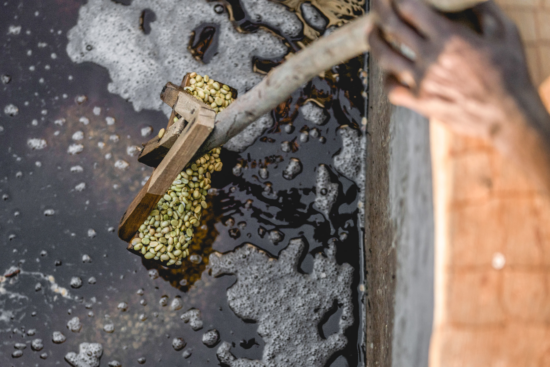
Pre-Fermentation
An example of the variance of the term can be found in what’s happening in Guatemala, where many farmers are experiencing positive results with what’s being called a ’pre-ferment.’ “In this step, the cherry—usually floated and sorted—is kept at room temperature for 24 hours before continuing along its processing journey. The pre-ferment is essentially its own unique fermentation step, carried out under unique environmental circumstances and with the cherry intact. If that coffee is then depulped, fermented in an open-air tank for 36 hours (as happens to many coffees in Guatemala), then washed, it could be called a ’washed double-fermented’ coffee. It would have, in fact, been a washed coffee that experienced two distinct fermentation steps.”
“The term ’double fermentation’ may need to be reassigned to coffees that go through two distinct fermentation steps that actually include the mucilage or the whole fruit,” Taya concludes. “With so much exploration into processing these days, it’s likely we will see more combinations of processing types, including multiple true fermentations done on the same coffees.“
ABOUT THE AUTHOR
Tanya Nanetti (she/her) is a specialty-coffee barista, a traveler, and a dreamer. When she’s not behind the coffee machine (or visiting some hidden corner of the world), she’s busy writing for Coffee Insurrection, a website about specialty coffee that she’s creating along with her boyfriend.


